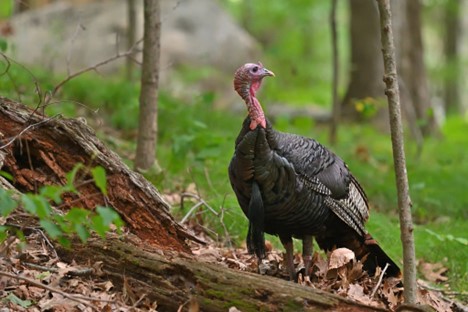Keep Wildlife Wild: Know What To Do If You Encounter Young Wild Animals
If you encounter baby wild animals this summer, remember to keep wildlife wild. A baby animal’s best chance of survival is with its mother.
As you head out to find your adventure this summer, the Wisconsin Department of Natural Resources (DNR) reminds you to help keep wildlife wild by staying a safe distance from young wild animals. The DNR has various resources to help determine when baby wild animals need help and when it’s best to leave them in their natural environment. See below for information on species you’re most likely to encounter outdoors.
- White-tailed deer
- White-tailed deer fawns can be born anytime between mid-May and early July. The doe will stay away most of the day to keep attention away from her fawn, visiting the fawn just a few times to feed, clean and maybe move the fawn to a new spot. Staying curled up alone is a natural behavior and the best protection from predators. A fawn’s spotted coat and minimal scent help them blend into their environment to keep them safe.
- Raccoons
- Raccoon kits are very vocal and will begin to explore at 6-8 weeks old. At this stage, they can be seen as active during the day without their mother and are about the size of a small house cat. Do not automatically assume the kits are orphaned, as the mother raccoon is likely nearby but is nocturnal or more active at night.
- Rabbits
- Rabbits typically have two litters per year, anytime from spring through fall. Kits open their eyes at 1 week old and begin exploring outside the nest at about 2-3 weeks old. A cottontail rabbit about the size of a softball with its eyes open and the ability to hold its ears upright is capable of being on its own. This happens when they are around 4-5 weeks old.
- Foxes
- By the time they’re 3 months old, fox kits start to join their parents outside the den on hunts and work on developing the skills they need to catch prey, such as mice and rabbits. They will also eat berries, insects, other small mammals and birds. Kits may also be seen outside the den exploring or playing during the day, but their parents are usually nearby.
- Opossums
- Female opossums have a pouch on their abdomen where they carry and nurse their young, called joeys, for about two months after birth. Once the joeys are too large for the pouch, they ride on their mother’s back until they are independent. A joey may fall off the mother’s back as she travels around looking for food. It can be left behind if it doesn’t catch up and climb back on. A joey is likely old enough to be on its own if it’s longer than 7 inches, not including the tail.
- Ducklings
- Newly hatched ducklings are covered in downy feathers and depend on their mother for warmth and protection. Within about 24 hours of hatching, the hen will lead her ducklings to water, and they will not return to the nest. The ducklings stick close to their mother, and she will stay with her brood until they can fly, around two months after hatching.
- Fledgling birds
- Young songbirds that leave the nest, or fledge, before their flight feathers are fully developed are called fledglings. They are still partially dependent on their parents for food; however, they will start to make short, low-level practice flights. This is important as they need to build up their strength and coordination as they gradually learn to forage for food. It’s common to see fledglings hopping around on the ground or sitting on the low branches of a tree or bush.
Here are the most important reasons to keep wildlife wild:
- Stress: Wild animals view people and domestic animals as predators and are highly stressed by the sights, sounds and smells of being near humans or domestic animals. This stress can cause serious health problems or death.
- Diet: Wild animals have specialized dietary needs that are not easily met. Without a specific diet, they are at high risk of severe nutritional deficiencies.
- Habituation: Wild animals must learn normal social behaviors from their own species. Wild animals that learn non-normal behaviors from humans or domestic animals will likely not survive if released.
- Disease: Wild animals carry many diseases and parasites, including some that can spread to domestic animals and humans.
- It’s illegal: Most wild animals are protected under state and federal laws and cannot be taken from the wild or possessed by unauthorized citizens.
Always contact the DNR or a licensed wildlife rehabilitator for advice before intervening. Learn more about what to do if you find a young wild animal on the DNR’s Keep Wildlife Wild webpage. |
